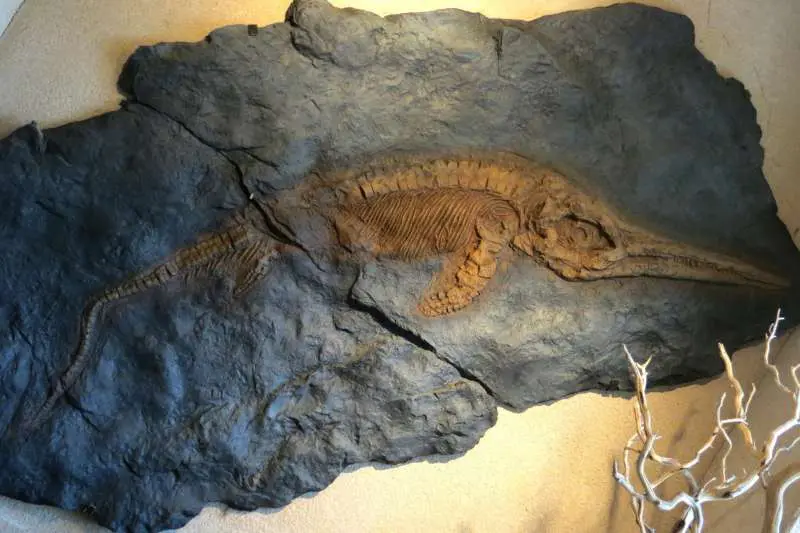[Originally published as Warm Blooded Ichthyosaurs?]
Evolutionists have long been seeking a way to prove that dinosaurs and other fossil reptiles were warm-blooded. Their desire to do so is purely ideological, as it would help them establish that dinosaurs somehow evolved into birds. Recently an article in the prestigious journal Nature announced that blubber had been discovered in a fossilized Ichthyosaur, leading the research team to proclaim they had found proof ancient reptiles were warm-blooded. However, analyzing their experiment reveals that they did not actually do any such thing.
The researchers claim to have identified a couple of types of soft tissue remnants in this fossil. I have no reason to doubt them, but I’ve seen enough false or misleading studies to ask for independent verification before completely buying in. I haven’t forgotten Archaeoraptor, the fraudulent missing link National Geographic tried to foist on us a few years back.
That aside, the researchers found evidence that some skin had been preserved. The skin was smooth, without obvious scales, and even contained evidence of pores. The skin also contained chromatophores containing a type of melanin. Chromatophores are packages of pigment in the skin which give each animal their unique coloration scheme. The way the chromatophores were arranged seemed to indicate that the ichthyosaur had been countershaded. This means it was colored darker above and lighter below to match the amount of light available when viewed from each direction.
However, the key finding of the article was that the Ichthyosaur had blubber preserved in its skeleton. This was deduced using chemical and morphological analysis of the preserved tissue. Since this is the first such find in an Ichthyosaur, the scientists proceeded to speculate that Ichthyosaurs and other marine reptiles were potentially warmblooded. This would be incidental evidence in their worldview that dinosaurs were also warm-blooded since Ichthyosaurs supposedly returned to the water from dinosaurian ancestors.
Having read through the study, it is possible that the Ichthyosaur in question did have blubber. However, before I completely accept that, there are a few questions I want to be cleared up. While the chemical analysis was consistent with blubber, I wonder if they compared it against other, similar tissues, such as other types of adipose tissue to see if it was also consistent with that. The study did not say.
Further, while they compared it against porpoise blubber, the study did not specifically say that they had fossilized the blubber before making the comparison, nor did they state what characteristics made them decide the two were similar beyond visual similarity. They may have fossilized it, but it is unclear whether they did so, or how the comparison was made. Further, and this is not a negative question, more of a query to learn, why is it with the vast number of Ichthyosaur fossils we have, some with extensive preservation, that we’ve never seen blubber before? We have fossilized Ichthyosaurs giving birth but not ones with blubber? Has no one ever looked before? What exactly is going on here?
Even supposing that this is blubber, and I’m not certain it is, there are still significant issues with the conclusions of the study. They conclude that this is evidence that Ichthyosaurs did indeed return to water from land and were thus, warmblooded. What the articles about the study probably will ignore is that there is a known sea reptile that has blubber. The study even mentions it repeatedly.
The leatherback sea turtle has blubber. So far as I can tell, leatherback turtles, along with other sea turtles, are postulated to have evolved from land turtles, which are not warm blooded. So what we have in the present is three groups of animals, porpoises and whales, some sea turtles, and ichthyosaurs, all with blubber, all recognized as being unrelated to each other. In other words, they believe blubber somehow evolved independently three separate times.
To a creationist, seeing sea creatures of varying types with blubber is evidence of a common designer, not a common ancestor. Blubber is meant to keep creatures insulated in cold ocean waters. It makes perfect sense for both reptiles and mammals to have it. Reptiles require heat from the sun to warm their body so they can function. In the cold oceans at depth, many would struggle to maintain body temperature. However, with blubber, the added insulation would allow them to stay down longer without losing heat. This is not an example of evolution, this points to a common designer.






